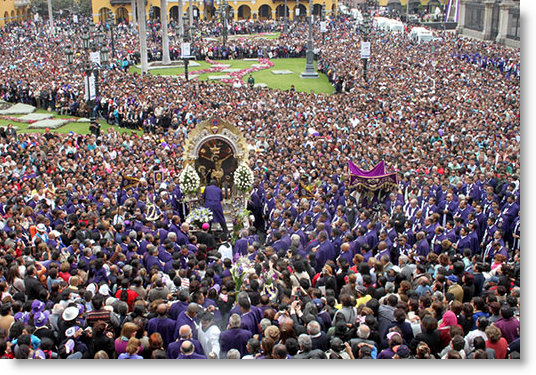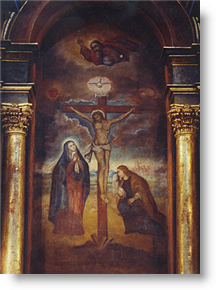
The traditional processions of the Señor de los Milagros or Lord of Miracles, held in Lima every October, is getting a technological upgrade.
Drones will be used this year, according to the Archbishop of Lima’s press office, to track and photograph the procession, which winds its way through Lima’s narrow downtown streets.
The drones will be used during the first day of the most important procession, which is held October 18-19, RPP Noticias reported.
The press officer for the Archbishop’s office, Fernando Lino, said that GPS users will be able to see the procession by using an application on called SDLM.
“This aerial equipment is innovative and we can’t be left behind,” Lino said. “We are working so that each year we can improve this application, and so now if someone can’t attend the procession, they can see it from their GPS.”
The first procession is held this Saturday, Oct 4, and the routes and dates of all four processions are shown on the Archbishop’s website.

The Lord of the Miracles is the largest Roman Catholic procession in Latin America, and is replicated not only in districts of Lima and in the provinces but in other cities in the hemisphere where there are large groups of Peruvians. A procession is held in Patterson, New Jersey, and there is also a homage procession held in Rome.
In Lima, the procession is followed by tens of thousands of people, often dressed in purple or wearing a purple insignia to show their devotion. The litter, which weighs almost two tons, is carried by teams of the Lord of Miracles brotherhood, wearing purple capes, and over 350 women in purple dresses and white mantillas take turns to walk ahead of the litter with their incense burners and singing traditional chants.
The procession dates back three centuries. On October 20, 1687, a major earthquake destroyed much of Lima and Callao, but a mural of Christ painted by an Angolan slave remained intact. A copy was painted onto a canvas and carried on a litter through the streets as an act of veneration.
Sixty years later, on October 28, 1746 another earthquake severly shook Lima and the subsequent tsunami virtually wiped out the port city of Callao. The Viceroy Manuel Amat y Juniet, urged by his mistress Micaela Villegas, known by disapproving society as La Perricholi, financed the building of the Temple of the Nazarenas, where the mural still remained intact.





